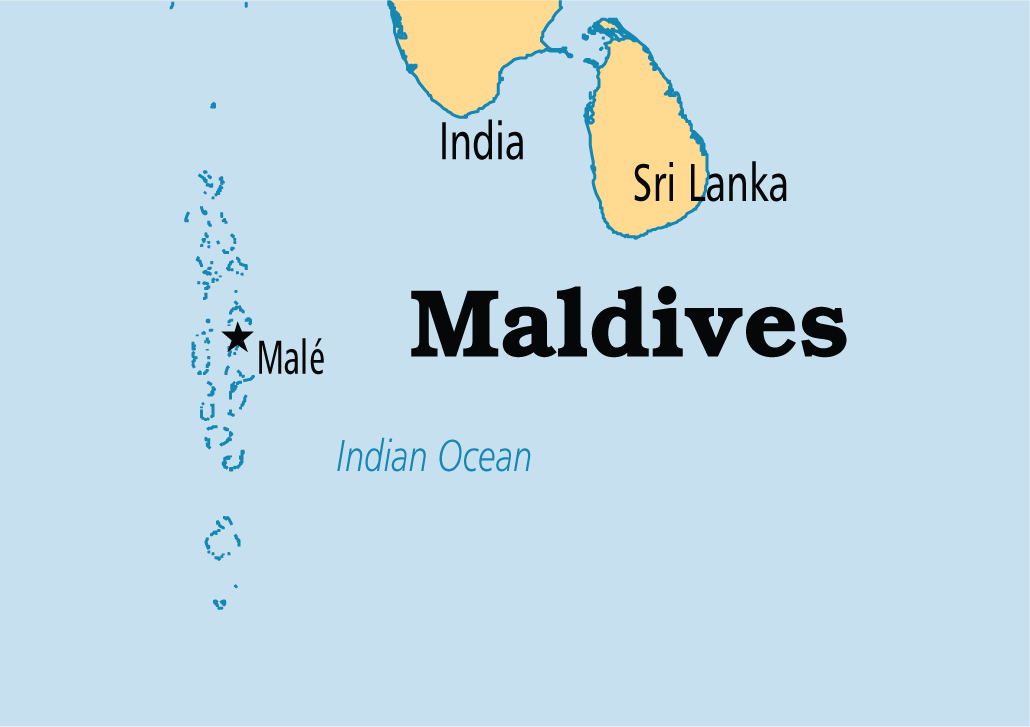India Announces Package to Maldives | 22 Aug 2020
Why in News
India has committed to Maldives a five-pronged package including air, sea, intra-island and telecommunications to help it deal with the economic impact of the Covid-19 pandemic.
Key Points
- The package includes:
- Greater Malé Connectivity Project (GMCP)
- A financial package consisting of a grant of 100 million USD and new line of credit of 400 million USD.
- This will be the largest civilian infrastructure project in Maldives, connecting Malé (the capital) with three neighbouring islands — Villingili, Gulhifalhu (where a port is being built under Indian line of credit) and Thilafushi (new industrial zone) – by construction of a bridge-and-causeway link.
- This will boost economic activity, generate employment and promote holistic urban development in the Malé region.
- Direct Cargo Ferry Service: It will be run between India and Maldives.
- The service is expected to enhance sea connectivity and provide predictability in supplies for importers in Maldives and exporters in India.
- Air Travel Bubble Between India and Maldives: This will facilitate movement of people for employment, tourism and medical emergencies.
- Maldives is the first neighbouring country of India with which an air bubble is being operationalised.
- Quotas for Supply of Essential Commodities: This was renewed for 2020-21. The commodities include food items as well as river sand and stone aggregates to assure food security, and supply of essential construction items.
- Financial Aid: In addition a financial aid of 250 million USD will be provided to Maldives by India.
- Greater Malé Connectivity Project (GMCP)
- Impact on India-Maldives-China
- The Indian aid is being appreciated and contrasted with the previous expensive commercial loans to Maldives by China which are being termed “debt-trap diplomacy” of China, wherein China intentionally extends excessive credit to another country with the intention of extracting economic or political concessions from the debtor country.
- The GMCP is also being compared to the Chinese built Sinemale Friendship bridge connecting Male to two other islands as it will be much bigger than the latter.
- The India-Maldives relationship suffered a setback when Maldives entered into a Free-Trade Agreement (FTA) with China in 2017.
- However with the election of a new pro-India government in Maldives, the relationships have improved and Maldives is also considering pulling out of the FTA with China.
- Since September 2018, India and Maldives have seen a number of bilateral visits.
- India’s Prime Minister visited Maldives to attend the swearing-in ceremony of President Solih.
- Maldives President also visited India in December 2018.
- The Home Minister of Maldives met Indian Home Minister on 21st February, 2020.
- At present, India-assisted projects in the region include water and sewerage projects on 34 islands, reclamation projects for the Addl island, a port on Gulhifalhu, airport redevelopment at Hanimaadhoo, and a hospital and a cricket stadium in Hulhumale.
- India had also announced a 800 million USD Line of Credit to Maldives in December 2018.
Significance of Maldives for India
- Geographical: Maldives’ proximity to the west coast of India.
- Maldives is barely 70 nautical miles away from Minicoy -the southernmost island of Lakshadweep.
- Lakshadweep group is separated from Maldives by Eight Degree Channel.
- It is situated at the hub of commercial sea-lanes running through Indian Ocean. More than 97% of India’s international trade by volume and 75% by value passes through the region.
- History: India and Maldives share ethnic, linguistic, cultural, religious and commercial links.
- India was among the first to recognize Maldives after its independence in 1965 and later established its mission at Male in 1972.
- Operation Cactus: In 1988, in response to a request from the Maldives, India activated Operation Cactus to deploy its military and ensure regime continuity in Male.
- Defence: Its potential to allow a third nation’s naval presence in the area.
- Since China’s naval expansion into the Indian Ocean, Maldives' significance has steadily grown and now it’s at the heart of international geopolitics.
- India provides the largest number of training opportunities for Maldivian National Defence Force (MNDF), meeting around 70% of their defence training requirements.
- ‘Ekuverin’ is a joint military exercise between India and Maldives.
- Geo-political: Maldives is an important aspect of India’s ‘Neighbourhood First’ policy.
- ‘India First’ has been a stated policy of the Government of Maldives.
- Maldives is a member of the South Asian Association for Regional Cooperation (SAARC) and the South Asia Subregional Economic Cooperation (SASEC)..
- Trade and Tourism: India is Maldives’ 4th largest trade partner after UAE, China and Singapore. In 2018, India was the 5th largest source of tourist arrivals in Maldives.
- In 2018, India was the 5th largest source of tourist arrivals in Maldives.e.
- India and Maldives signed a trade agreement in 1981, which provides for export of essential commodities.
- India-Maldives bilateral trade now stands at US$ 288.99 Million heavily in favour of India.
- Disaster Management: The Government of India has provided large-scale assistance to Maldives in the aftermath of the 2004 Indian Ocean tsunami and during the 2014 Male water crisis.
- Diaspora: There is a significant Indian diaspora in the Maldives. Indians are the second largest expatriate community in Maldives with an approximate strength of around 22,000. About 25% of Doctors and Teachers in Maldives are Indian nationals.
Way Forward
Given the economic hardships being faced by Maldives due to Covid-19 pandemic and previous debts, this package will definitely warm up the relationship between both the countries. This will also provide a strategic edge to India over China with regards to Maldives.

